Hidden quietly in the spiritual heart of India, Lalita Devi Temple, Prayagraj stands as an overlooked yet potent powerhouse of divine feminine energy. Although most travelers visit Prayagraj for the Triveni Sangam and Kumbh Mela, few realize that the city also houses one of the 51 sacred Shaktipeethas—the revered Lalita Devi Temple.
What makes this temple so unique? Why is it still off the radar for many spiritual pilgrims? Let’s embark on a journey that not only explores its mythological significance but also uncovers my personal experiences during a recent visit from Kolkata.
Mythology: Seat of the Divine Feminine
According to the Hindu Puranas, Sati, the daughter of Prajapati Daksha, married Shiva against her father’s wishes. Daksha performed a grand yajna (sacrifice) but did not invite Sati or Shiva. Even so, Sati went to the yajna, where Daksha ignored her and insulted Shiva. Unable to bear the insult, Sati offered herself into the fire. Filled with grief, Shiva wandered the universe carrying her half-burnt body. At last, Vishnu used his Sudarshan Chakra to cut her body into 51 parts, which fell on different places across the earth. Each of these places became a Shakti Peeth.
According to ancient belief, Sati’s finger fell at Prayagraj, sanctifying the site as a Shaktipeetha. Devotees revere Goddess Lalita Devi as an incarnation of Mahashakti—a fierce yet compassionate mother who protects her followers and grants their wishes. Scriptures like the Matsya Purana reference this temple as one of the three most powerful Shaktipeethas, alongside those in Kashi and Vindhyachal.
You may also explore four Adi Shaktipeethas: Vimala, Tara Tarini, Kamakhya and Kalighat.
Historical Background: Tracing the Temple’s Legacy Through Time
As a history reader, one must rely not just on legends, but also on inscriptions, architectural styles, and referenced texts to trace the lineage of sacred spaces like the Lalita Devi Temple, Prayagraj. Although this Shaktipeetha’s origins stem from Puranic lore, classical sources and regional records clearly reveal its historical footprint.
The Matsya Purana offers the earliest known mention of Lalita Devi in Prayag, describing her as one of the three prime goddesses of the region, alongside Vindhyavasini and Annapurna of Kashi. This reference firmly establishes her worship at least as early as the Gupta period (4th–6th century CE), a time when Prayag flourished as a spiritual and cultural center under royal patronage.
Late Gupta to early medieval era
Archaeological evidence, such as temple fragments and carved pillars discovered in the vicinity, point to temple activity during the late Gupta to early medieval era (7th–10th century CE). Several historians believe that a significant temple structure once stood here during the rule of the Pratiharas, known for reviving Hindu temples after periods of iconoclastic attacks.
The temple faced substantial challenges during the Delhi Sultanate and Mughal period, yet it survived—likely due to its inconspicuous location in Meerapur and the resilience of local Brahmin communities who preserved its worship traditions discreetly. It’s noteworthy that Abul Fazl, in the Ain-i-Akbari, lists Prayag as a vital pilgrimage hub, though without specific reference to Lalita Devi—underscoring the underground nature of Hindu temple worship during this era.
During the 18th and 19th centuries, with the decline of Mughal control and the rise of regional powers like the Marathas and Awadh Nawabs, temple patronage saw a resurgence. Several copper plate grants and land donation records from the British archival documents mention endowments to the “Devi at Meerapur,” a reference believed to be pointing to Lalita Devi.
In modern times, the temple’s significance as a Shaktipeetha was reaffirmed by Sanskrit scholars and priests who compared oral traditions with scriptural descriptions. Today, it stands not only as a religious site but also as a living testament to the continuity of indigenous faiths through centuries of change.
Architecture: A Divine Energy Encased in Simplicity
As I entered the Lalita Devi Temple, the ancient stone idol of the goddess, seated in a lotus posture, immediately struck me. It wasn’t about opulence. The temple doesn’t boast massive gopurams or golden domes. Instead, its beauty lies in its spiritual gravity and intimacy.
As someone deeply interested in ancient architecture, I noticed the Nagara-style sanctum, the symbolic trishuls placed in corners, and the subtle Tantric yantras etched on stone walls—perhaps a nod to the temple’s Shaktipeetha status.
The air was thick with energy. I could feel goosebumps during the aarti, not from sound or visuals, but from the palpable presence of something deeply ancient and sacred.
Geographical Location: Where the Energies Merge
Lalita Devi Temple is situated in the Meerapur area of Prayagraj, Uttar Pradesh. Unlike the bustling ghats or touristy spots near Sangam, this temple nestles in a peaceful residential zone, making it ideal for seekers looking for tranquility and spiritual introspection.
Coordinates: 25.4541° N, 81.8432° E
Nearby landmarks: Close to Khusro Bagh and Triveni Sangam, yet separated enough to retain its calm atmosphere.
How to Reach Lalita Devi Temple, Prayagraj
By Air:
The nearest airport is Prayagraj Airport (Bamrauli), located around 12 km from the temple. You can take a cab or an auto to reach the temple directly.
By Train:
Prayagraj Junction (formerly Allahabad Junction) is a major railway hub. From the station, Meerapur is just a 10-15 minute auto ride.
By Road:
Well connected via NH-19 and NH-30, the city is accessible from Varanasi, Lucknow, and Kanpur.
Where to Stay in Prayagraj
Prayagraj offers everything from budget lodges to premium hotels. For spiritual travelers, I recommend staying near Civil Lines or Triveni Sangam.
Hotel Prayag: 73, Noorullah Rd, near Prayagraj, junction, Miurabad, Prayagraj, Uttar Pradesh 211003
Max Hotel Prayagraj: Multi Functional Complex , Civil Lines Railway Station Compound, Prayagraj, Uttar Pradesh 211001
Hotel Saket: Mahatma Gandhi Marg, Civil Lines, Prayagraj, Uttar Pradesh 211001
Best Time to Visit Lalita Devi Temple
The temple is open year-round, but certain seasons offer a more fulfilling experience:
| Season | Months | Attraction |
|---|---|---|
| Winter | Nov – Feb | Pleasant weather, less crowd |
| Navratri Season | Mar-Apr & Sep-Oct | Grand celebrations, high energy |
| Monsoon | Jul – Sep | Lush surroundings, spiritual aura |
| Avoid Summer | May – Jun | Extremely hot & humid |
Festivals: When the Temple Comes Alive
While daily rituals keep the temple vibrant, it truly comes alive during:
- Navratri: The temple is beautifully decorated, and special pujas, havans, and bhajans echo through the nights.
- Durga Ashtami: A large number of devotees gather for blessings.
- Magh Mela: Held around January-February, this coincides with the spiritual Kalpavas near Sangam, and the temple sees a major surge in footfall.
During my visit in Chaitra Navratri, the energy was electrifying. The temple courtyard resonated with chants of “Jai Mata Lalita,” and local women performed the Kanya Pujan ritual with absolute devotion.
Local People & Culture
The people of Prayagraj are deeply spiritual, humble, and incredibly hospitable. In Meerapur, I met a local priest named Pandit Ramdas, who offered deep insights into the Tantric rituals once performed at the temple. He also narrated folklore passed down generations—tales of how Lalita Devi protected the city from floods and invasions.
The community spirit is strong here. From shopkeepers to rickshaw pullers, everyone respects the divine power associated with the temple.
Nearby Attractions You Shouldn’t Miss
Prayagraj is a cultural buffet, and the temple can be a starting point for other explorations:
Triveni Sangam: Just 4 km away, the confluence of Ganga, Yamuna, and Saraswati.
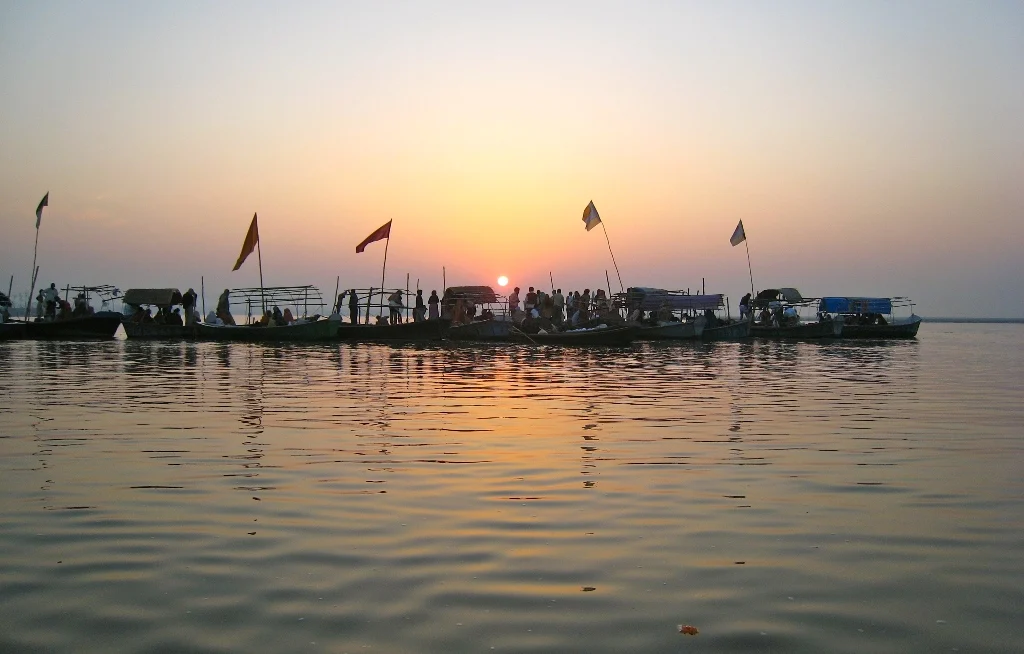
Triveni Sangam is the confluence of three rivers – the Ganga, Yamuna, and the mythical Saraswati – in Prayagraj (formerly Allahabad), Uttar Pradesh, India. It is a highly revered and spiritually significant place for Hindus, drawing pilgrims and tourists alike. The confluence is considered a Triveni Tirtha, where three rivers merge, symbolizing the confluence of three aspects of divinity.
Allahabad Fort: A Mughal Architectural Marvel
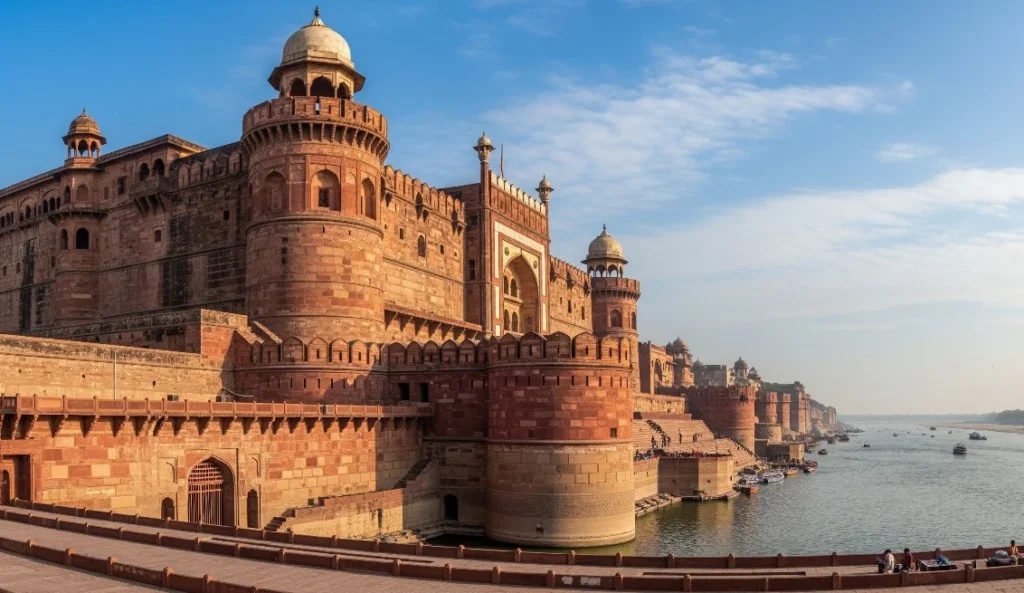
Allahabad Fort was built by the Mughal emperor Akbar at Allahabad in 1583. The fort stands on the banks of the Yamuna, near its confluence with the Ganges. It is classified by the Archaeological Survey of India as a monument of national importance.
Alopi Devi Temple: Another unique Shaktipeetha where no idol exists—only a wooden chariot.
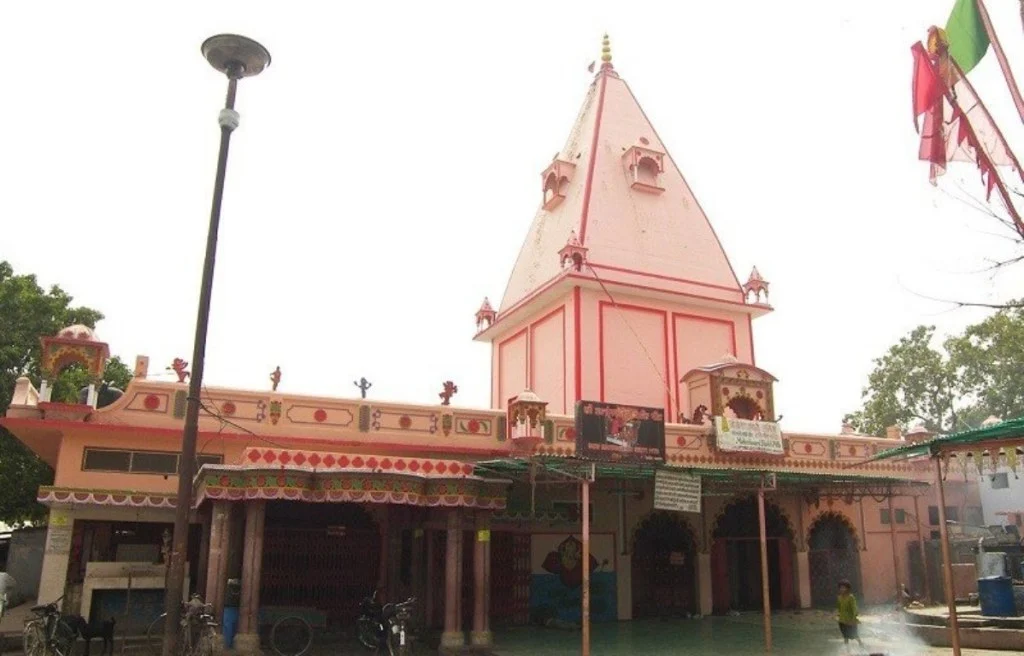
Alopi Devi Temple is a Hindu temple, situated in Alopibagh in Prayagraj in state of Uttar Pradesh, India. It is near to the holy Sangam, or confluence, where the rivers Ganges, Yamuna and the legendary Sarasvati meet. Kumbh Mela is near to this place. As per some historical evidences, the Maratha warrior Shreenath Mahadji Shinde had developed the Sangam place during his stay at Prayagraj in 1771–1772. Later in 1800s, Maharani Baizabai Scindia has done some works for renovation of Sangam ghats and temples at Prayagraj.
Khusro Bagh: Mughal garden tombs worth visiting for architecture lovers.
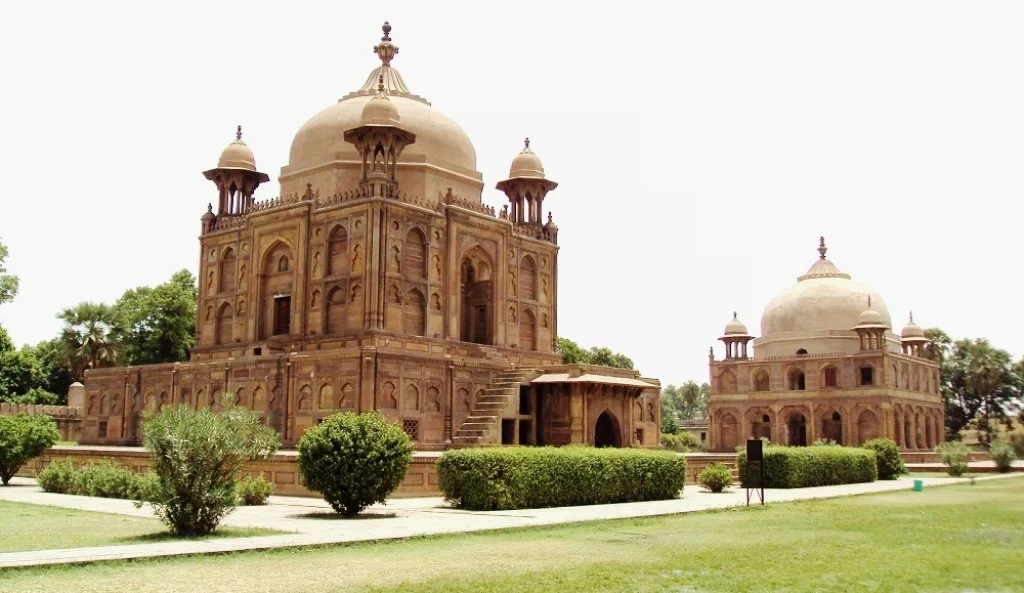
Khusro Bagh is a large walled garden and burial complex located in muhalla Khuldabad, close to the Prayagraj Junction railway station, in Prayagraj, India. It is roughly 6 km from the Akbar fort. The garden is situated over forty acres and shaped like a quadrangle. It is listed as an Indian Site of National Importance.
Anand Bhavan: The ancestral home of Nehru, a must-visit for history enthusiasts.
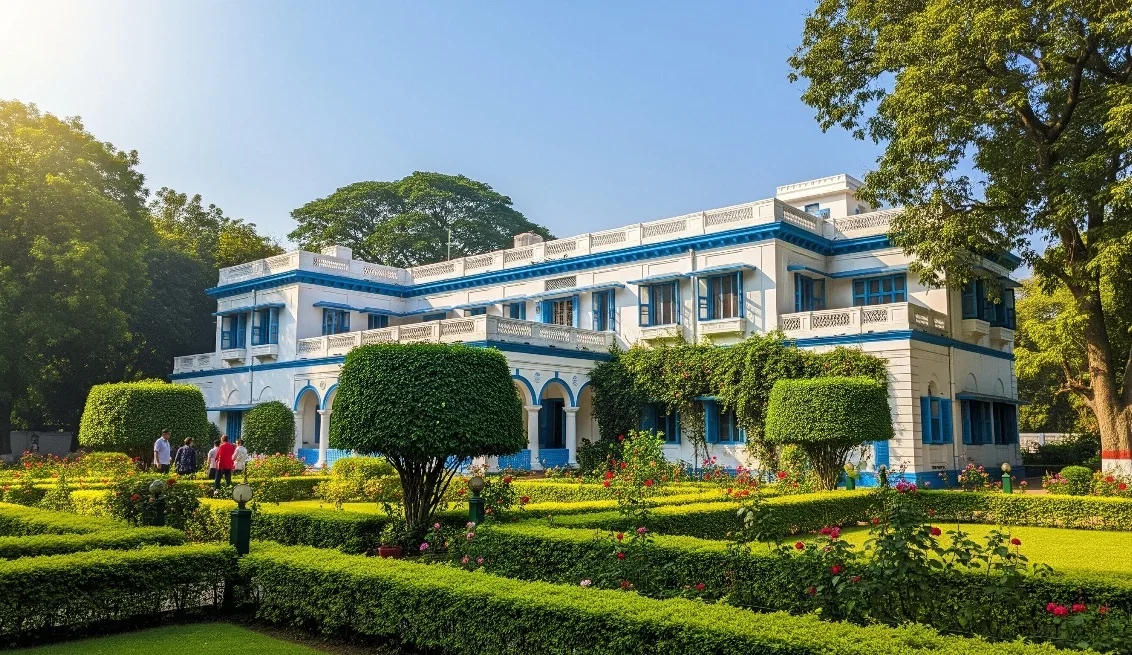
The Anand Bhavan is a historic house museum in Prayagraj, India, focusing on the Nehru family. It was bought by Indian political leader Motilal Nehru in the 1930s to serve as the residence of the Nehru family when the original mansion Swaraj Bhavan (previously called Anand Bhavan) was transformed into the local headquarters of the Indian National Congress.
Conclusion: A Temple That Speaks in Silence
Lalita Devi Temple, Prayagraj may not have the grandeur of Vaishno Devi or the crowd of Kamakhya, but what it offers is purity, peace, and power. It’s a temple where history whispers, mythology breathes, and the divine feminine reigns supreme.
If you’re someone seeking spiritual renewal, or just wish to explore an authentic, lesser-known Shaktipeetha, this temple deserves a place on your journey map. It transformed my understanding of devotion—from ritualistic to personal.
FAQs:
Temple Opening Time: 05:00 AM – 09:00 PM
It is 33 min (8.7 km) via Purushottam Das Tandon Marg and 34 min (7.4 km) via Kamla Nehru Rd and Tilak Rd
According to ancient belief, Sati’s finger fell at Prayagraj.
It is 21 min (6.6 km) via Grand Trunk Rd/Varanasi – Prayagraj Rd / 23 min (7.5 km) via Mahatma Gandhi Marg / 28 min (8.7 km) via Mahatma Gandhi Marg and Noorullah Rd.

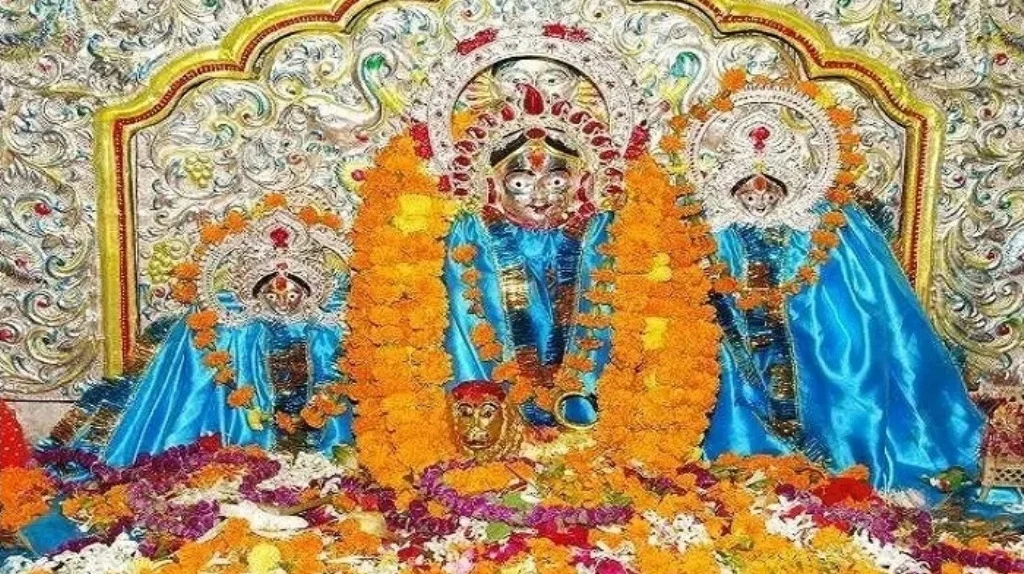


I like the helpful information you provide in your articles.
I will bookmark your weblog and check again here regularly.
I am quite sure I will learn many new stuff right
here! Good luck for the next!
Большое спасибо
Amazing! Its actuallly awesome article, I have got much clear idea
regarding from tuis paragraph. https://meds24.sbs/